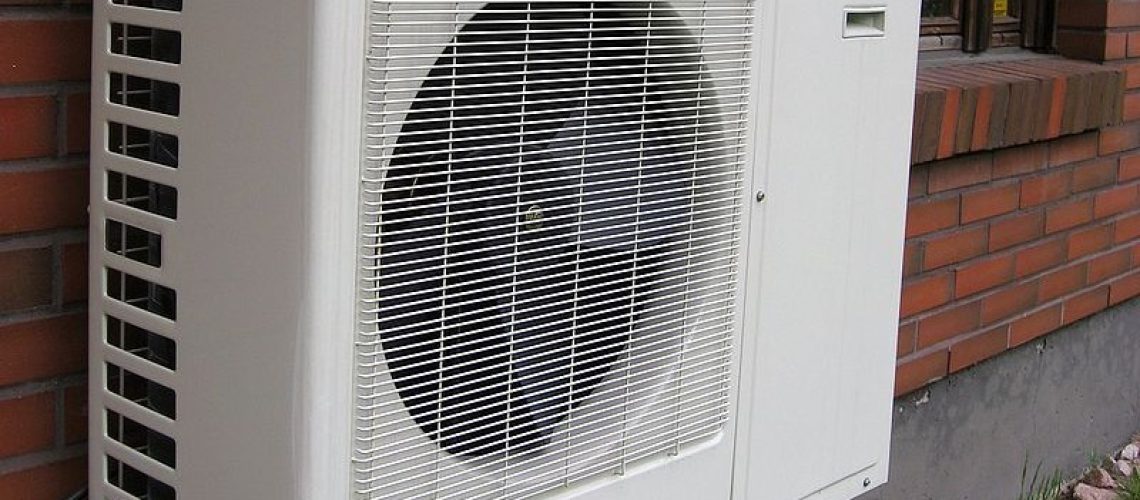Developed by a Chinese research group, the novel refrigerant is made of a mixture of carbon dioxide (CO2) and a non-flammable hydrofluoroolefin. It has slightly higher costs compared to conventional compounds, but its creators claims these costs could be significantly reduced with large-scale industrial production.
From pv magazine Global
A group of scientists led by the Zhejiang University in China has developed a novel zeotropic refrigerant that can reportedly improve the performance of air-source heat pumps (ASHPs), while also offering a number of safety and stability advantages.
“The cost of this new refrigerant is only slightly higher than commonly used counterparts,” the research’s lead author, Jeilin Luo, told pv magazine. “For example, based on our experience, the new refrigerant is about $15/kg higher than the most commonly used refrigerant R134a in the market. And we believe the cost will be further reduced with the pace of increasing industrial production and phasing out traditional refrigerants.”
In the study “Energy, exergy, economic and environmental studies on a nonflammable eco-friendly mixture for efficient heating in cold regions,” published in Energy Conversion and Management, the group explained that the refrigerant is made of a mixture of carbon dioxide (CO2) and a non-flammable hydrofluoroolefin (HFO) known as trans-1,1,1,4,4,4- hexafluoro-2-butene (R1336mzz(E) and said this is the first time it is tested in ASHPs.
The group also explained that azeotropic refrigerants usually cannot achieve high efficiency without either flammability or high global warming potential (GWP). “Zeotropic refrigerants still pose safety and environmental risks,” they stated, noting that blends of CO2/HFO have the potential to realize safety and eco-friendliness. “CO2 and R1336mzz(E) are both non-flammable with GWP lower than 7.”
The scientists conducted a series of simulations to assess the performance of the proposed refrigerant and considered its use in an ASHP consisting of a compressor (COMP), a condenser (CON), a separator (SEP), a recuperator (REC), an evaporator (EVA), expansion valves (EXV1 and EXV2), control valves (CV1-CV3) and connecting pipelines.
In the proposed system configuration, the zeotropic CO2/R1336mzz(E) mixture is initially brought to high pressure and high temperature by COMP. Then the CON releases heat for water heating and the mixture from CON splits into two streams, with the one flowing through CV1 separated into vapor and liquid by SEP.
“The vapor is mixed with the stream flowing through CV2 and is cooled to sub-cooled liquid in REC,” the scientists explained. ” This sub-cooled liquid is throttled by EXV1 to achieve further low temperature before EVA.”
The refrigerant’s stream also absorbs heat from air in EVA and then exchanges heat in REC, where it is mixed with the liquid throttled by EXV2. The mixed stream keeps absorbing heat in REC to then return to the inlet of COMP.
The simulations were conducted in MATLAB environment and showed that the ASHP using the new refrigerant may achieve a 21.2% higher coefficient of performance (COP) and a 13.5% higher heating seasonal performance factor (HSPF) compared to heat pumps using conventional refrigerants. “And the improvement is more distinct in the middle north region of China, where there is a large population density,” the academics specified.
Further economic analysis also showed the proposed ASHP system has a payback period of less than 7.5 years and an annual cost reduction of up to 14.5%. It also achieved a significant CO2 emission reduction of more than 15.7 % compared with traditional ASHP systems.
“We are testing the refrigerant in a practical system,” Luo stated. “We have done a series of lab-scale tests and confirmed its applicability and performance superiority. The experiment is still ongoing and we have confidence in it.”




